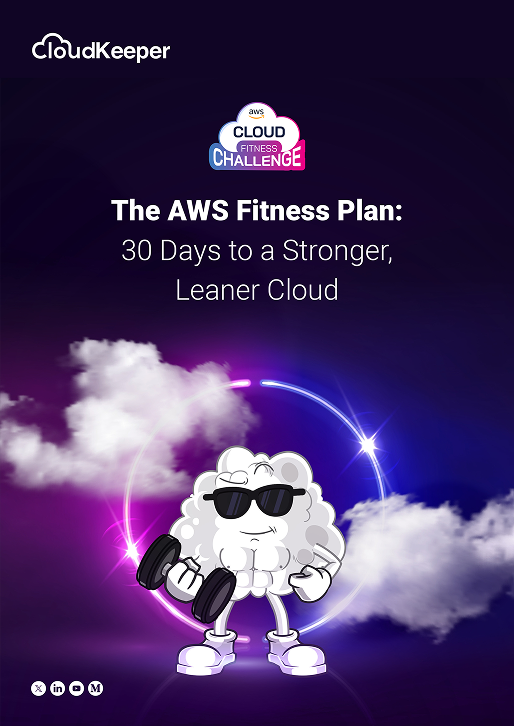More than 53% of companies who have set out on their Cloud FinOps journey do not still have a clear understanding of their cloud costs. To successfully manage cloud costs, a robust cloud cost visibility framework is critical. In other words, it is crucial to have a clear visibility into how you use cloud resources and what they cost you.
In this article, we will look into the basics of cloud cost visibility and the common challenges that companies encounter while trying to optimize their cloud infrastructure to save cloud costs.
What is cloud cost visibility and why it matters
The basic premise of cloud cost visibility is that to be in greater control of your costs, you must understand where your costs are being spent. This involves diving into your cloud services and instances and exactly having a clear view of what each resource is consuming, along with ways and means to optimize them. Think of it as the process of monitoring, tracking, and analyzing your cloud costs, and then getting actionable tips on how to optimize cloud spend. In addition to analytics, forecasting your cloud expenses can add an edge to your cloud optimization journey, as it would better prepare you for the future.
With a cloud cost visibility solution in place, you can better analyze your data, look for trends, identify underutilized resources, and detect cost anomalies that might indicate wasted or runaway spending. After analyzing the data, you can make changes to optimize your cloud usage.
Cloud cost visibility also helps in setting up budgets and forecasting future spending to avoid cost escalations.
Cloud cost visibility platforms can also help automate your cloud cost optimization by turning off unused resources, detecting anomalous usage and spending thresholds, or sending alerts when spending exceeds a predefined budget.
Challenges to cloud cost visibility
Cloud cost visibility is often plagued with a lot of challenges. Some of them are:
Complex cloud prices: The complexity of AWS offerings with different configurations and cloud pricing models can make it difficult for you to understand how each resource is being used and how much it costs you. Even the AWS monthly bill is quite complicated to comprehend and make sense of.
Tagging complexities: Tags are critical to a cloud visibility strategy. However, working with tags can be time-consuming and highly complex. Untagged resources can also lead to incorrect cloud spend and usage reports.
Dynamic cloud resources: The dynamic nature of cloud resources can make it difficult to predict costs and further manage their spending.
Report granularity: The monthly bill that AWS provides does not include a granular breakup for different departments, business units, services, resources, or applications, making achieving cloud cost visibility challenging.
Multi-account and multi-region: Tracking and monitoring costs become highly challenging when the AWS accounts or resources are distributed across different regions and geos.
Navigating the challenge in cloud cost visibility
Cloud cost visibility can be achieved by a concerted effort of every team and stakeholder and with a clear understanding of your cloud infrastructure. Here are a few key steps.
1. Collaboration of different stakeholders: A strong and cohesive FinOps team with stakeholders from engineering, operations, finance, etc. is the first towards towards gaining complete visibility into your organization’s overall cloud costs.
The whole team should collectively understand the correlation between cloud infrastructure, AWS infrastructure costs, and business goals and actively towards value achievement. The team should imbibe a culture of cloud cost visibility and awareness.
2. Follow a unified Tagging strategy: Organizations need to create and follow a plan around how to tag resources in a unified and consistent manner. It is important to note that tags are meaningful only in the context of an organization, so you need to create a tagging strategy that reflects your internal structure and reporting system.
When executed in the right manner, a unified tagging strategy can give you high tag coverage and also create a culture of visibility where all the resources are tagged correctly, and there is complete allocation of costs.
3. Cost Allocation strategy: Cost allocation can play a key role in establishing a robust cloud cost visibility foundation. Cost allocation tags provide a structure for you to categorize your cloud resources and infrastructure. While cost allocation tags have no semantic purpose, they help identify the purpose and owner of every resource thus helping with tracking, accountability, and reporting. Learn more about the best practices for Cloud Cost Allocation and Cloud Tagging.
4. Leverage Granular Business Reporting: Granularity in reporting can help you scrutinize resource utilization with precision, allowing you to make informed decisions that positively impact your bottom line and result in accurate cloud cost forecasting. The higher the granularity, the more information you will have available to track and optimize your cloud resources and thus achieve better cloud cost visibility, and in the end, higher cloud profitability.
Granular reporting will exactly pinpoint and monitor any abnormal spike in cloud utilization, any cost trends and patterns, and also the usage of reserved instances identifying the ones that are being underutilized.
5. Scale Efficiently with Centralized Cloud Management: You can efficiently navigate the complexities of multiple cloud accounts by managing them through a central unified dashboard. This centralized approach provides a comprehensive overview, empowering you to scale operations seamlessly. With the right set of cloud cost visibility platforms and tools, the formidable task of managing multiple cloud accounts is made very easy.
Despite the hurdles and complexities, cloud cost visibility remains an indispensable element for successful cloud cost optimization. However, with cloud cost visibility solutions like CloudKeeper Lens, you can overcome the challenges and gain granular visibility and control over your cloud expenditure. Book a free demo today to experience its multiple benefits!
